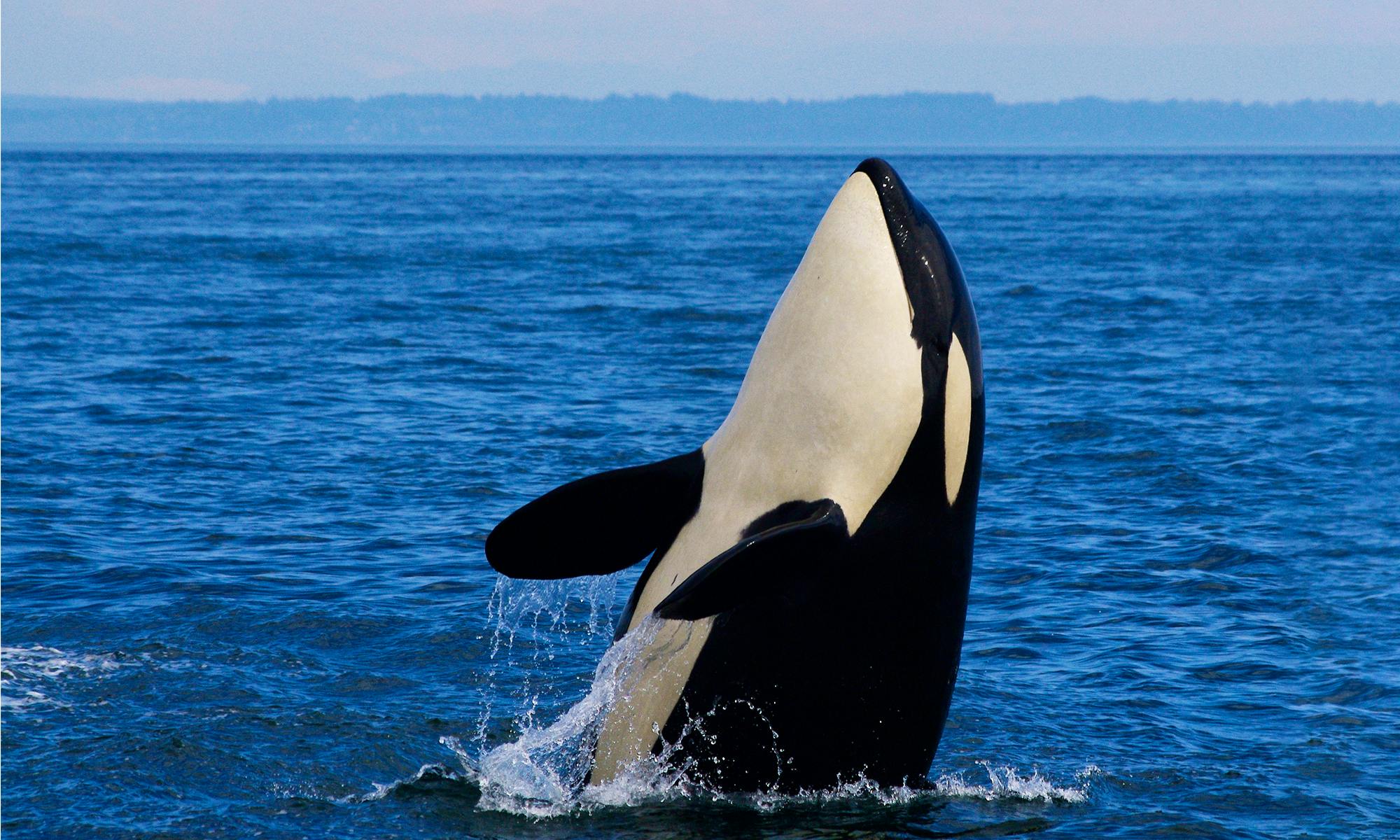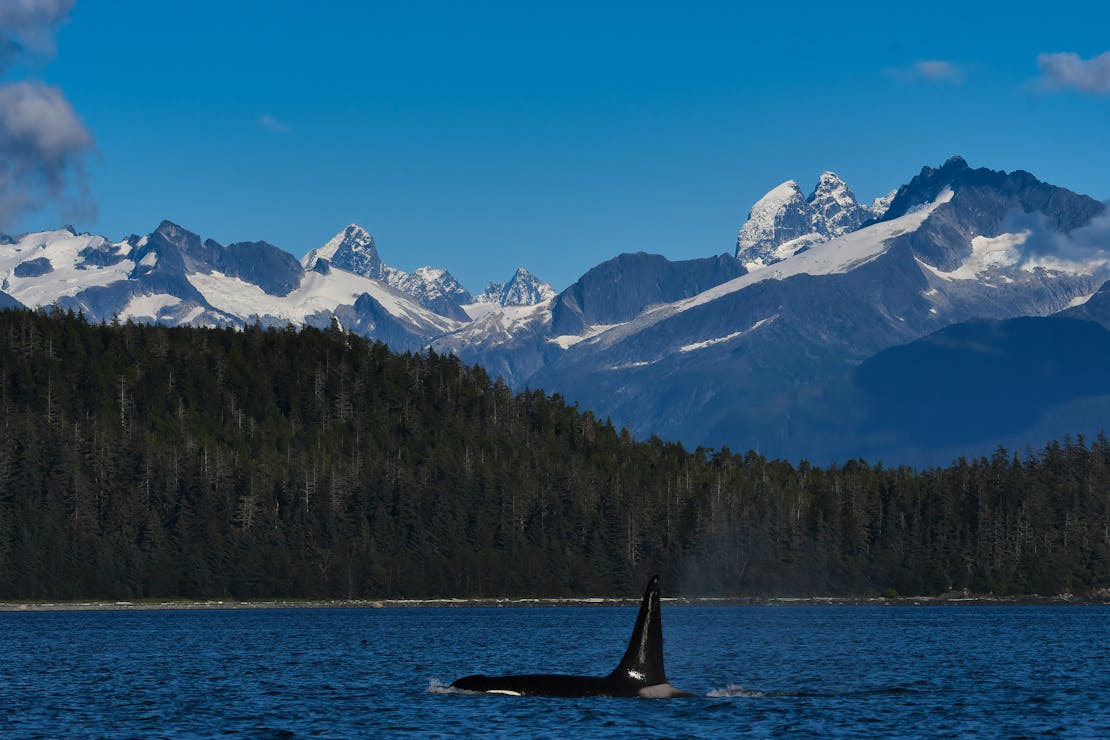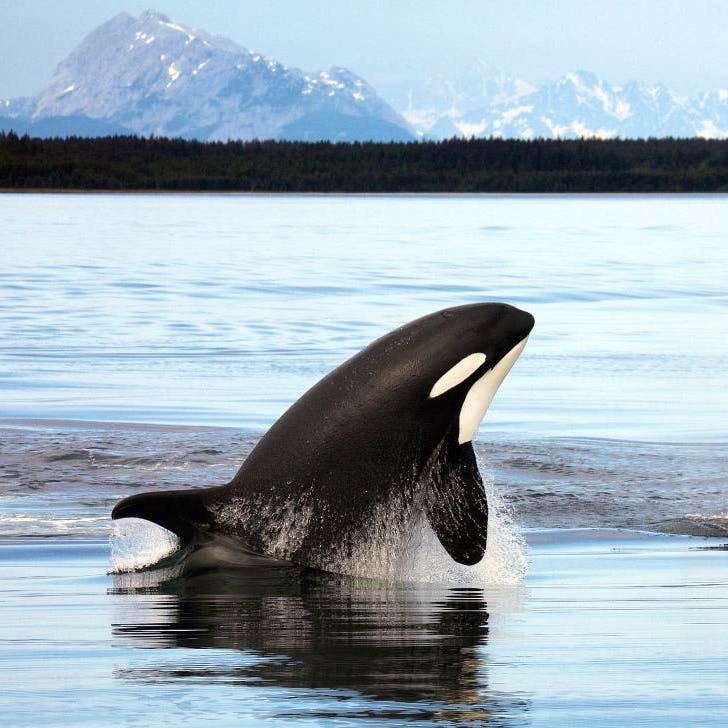Join our mobile Rapid Response Network!
You can be the first to hear about how we’re going to hold this administration accountable and how you can fight back for wildlife!
There are several different subspecies of orcas around the world, many of which are thriving. Others, however, are critically endangered. Southern Resident orcas, a unique fish-eating population in the Pacific Northwest that are genetically and behaviorally distinct from other killer whales, are currently on the brink of extinction. Fewer than 80 individuals survive today.
Why are Southern Resident orcas endangered?
The Southern Resident orca population was initially reduced by nearly a third between 1965 and 1975 when nearly 50 members were captured for marine parks. Most of those captured died. Since the 1990s, their numbers have declined due to several threats, the most notable being the decline in their primary prey – Chinook salmon.
Unlike other subspecies of killer whale, Southern Residents do not eat other marine mammals. They subsist on fish, mostly salmon. Unfortunately, large dams — like those on the lower Snake River — the destruction of salmon habitat, climate change and other factors have caused many Pacific salmon stocks to plummet leaving these orcas with less and less to eat.
Today, the Southern Residents are slowly starving, drastically impacting their ability to recover and reproduce. Nutritional stress is contributing to a 69% miscarriage rate for pregnant females, and deaths are outpacing births in the population. On a collision course with extinction, the Southern Residents are also struggling with noise from ship traffic and toxic pollution. Underwater noise disrupts the orcas’ echolocation, impacting their ability to communicate and forage for already scarce prey. Toxic chemicals that enter waterways through derelict vessels, stormwater runoff and other sources contaminate the salmon the orcas eat, which in turn accumulates in their bodies, posing serious health risks. Their nutritional deficiency enhances these risks because they have less blubber in which to store toxic substances.
The three primary threats to Southern Resident orcas are lack of prey (chinook salmon), toxic pollution and noise disturbance.
The southern resident distinct population segment (DPS) is listed as endangered.
Southern resident orcas are data deficient under the IUCN red list.

Defenders' Impact
Defenders of Wildlife:
- Advocates to remove four federal dams on the lower Snake River, which would restore a critical salmon run for the Southern Residents.
- Works to secure funding for critical state and federal programs that protect and restore salmon habitat and water quality like the Pacific Coast Salmon Recovery Fund and the Environmental Protection Agency’s Geographic Area Program.
- Actively advocates for stronger state-level protections for the Southern Residents, such as maintaining a 1000-yard distance from the orcas on the water, banning toxic chemicals through the Safer Products Washington program, and listing the orcas as endangered under Oregon’s state Endangered Species Act.
- Educates the public about threats to the Southern Residents, their significance to regional cultures and ecosystems, and how people can help them through outreach events such as Orca Action Month.
- Launched a coexistence program in 2017 called Orcas Love Raingardens. This program promoted raingardens at public schools and parks to reduce the amount of polluted stormwater reaching local waterways and impacting salmon and orcas. Raingardens are a wonderful opportunity to educate communities without regular access to the outdoors about orcas, salmon and the connections between humans and ecosystems.
Your support ensures our expert team of scientists, lawyers, advocates and activists have the resources needed to demand action and protection for wildlife across the nation.
What You Can Do
Reduce, reuse and recycle to help keep plastic and toxic contaminants out of waterways. Limit chemical use and plant a raingarden to reduce stormwater runoff. Volunteer for beach cleanups or salmon habitat restoration projects in your area. If you spot whales while out on the water, keep quiet, stay low and give them their space. Tell your local, state and federal legislators to act for the benefit of the Southern Resident orcas and Pacific salmon. Sign up for action alerts from Defenders.

About
Southern Resident orcas spend over half the year in the Salish Sea, which includes Puget Sound, the Strait of Juan de Fuca and the Strait of Georgia. For the other half of the year, they are found foraging for salmon along the coasts of Washington, Oregon and California, as far south as Monterey Bay. The mouths of large West Coast rivers, like the Columbia and Fraser, are especially important habitat for Southern Resident orcas due to the concentration of salmon.
There are less than 80 Southern Resident orcas left in three pods: J, K and L.
Pods are matriarchal and usually consist of five to 30 whales, although some pods may combine to form a group of 100 or more. Orcas establish social hierarchies, and pods are led by non-reproductive older females, who often teach hunting skills and help feed younger relatives. Orcas have a complex form of communication with different dialects from one pod to another.
Gestation is 13 to 16 months. Calves are born in autumn and weigh almost 400 pounds and measure up to seven feet in length. Calves will remain with their mothers for at least two years.
Southern Resident orcas diets consist of fish. They consume most species of salmon but strongly prefer Chinook salmon, which can account for 50 – 100% of their diet depending on the season. Unlike some other subspecies of killer whale, they do not prey on marine mammals such as seals or sea lions.
Featured
News











